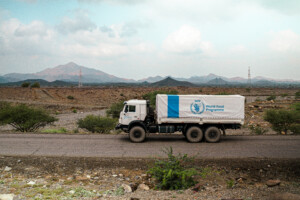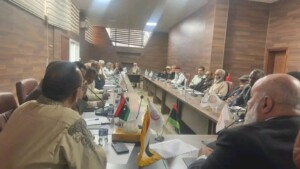Sudan OCHA bulletin 32: Poor nutrition levels across Sudan
The UN Office for the Coordination of Humanitarian Affairs (OCHA) in Sudan reports in its latest weekly bulletin that a one million children in Sudan under the age of five suffer from acute malnutrition. Another two million are stunted owing to chronic malnutrition. The World Food Programme (WFP) nutrition interventions are constrained by a lack of funding and difficulties in importing “super cereals”.
The Sudanese Ministry of Health has recorded 2,896 confirmed measles cases, including 43 deaths, and 4,545 suspected measles cases by the end of July.
Heavy rainfall and floods affect the delivery of aid in parts of Darfur.
The UN Office for the Coordination of Humanitarian Affairs (OCHA) in Sudan reports in its latest weekly bulletin that a one million children in Sudan under the age of five suffer from acute malnutrition. Another two million are stunted owing to chronic malnutrition. The World Food Programme (WFP) nutrition interventions are constrained by a lack of funding and difficulties in importing “super cereals”. Heavy rainfall and floods affect the delivery of aid in parts of Darfur.
The Sudanese Ministry of Health has recorded 2,896 confirmed measles cases, including 43 deaths, and 4,545 suspected measles cases by the end of July.
Of the one million children suffering from acute malnutrition, some 550,000 are severely malnourished and at risk of death. In 53 of Sudan’s 184 localities, children under the age of five have severe acute malnutrition (SAM) rates that are classified as very critical.
The highest SAM rates are found in three localities in South Darfur and Red Sea states. Most of the children with SAM are found in North Darfur, El Gezira, South Darfur, Khartoum and El Gedaref. These five states carry 51 percent of the national SAM burden.
A survey conducted by Unicef in 2013 revealed that 128 of the 184 localities in Sudan have a stunting rate classified as ‘high’ (above 30 percent). Moreover, there were pockets of very high stunting rates, found mostly in the eastern states of Red Sea, Kassala and El Gedaref, with the highest being El Gedaref at 73 percent.
This results in an average global acute malnutrition (GAM) rate of 16.3 percent, which is above the 15 percent threshold that constitutes a critical emergency.
According to Unicef, the key drivers of this poor situation are the high incidence of communicable diseases amongst children, particularly diarrhoea, measles, pneumonia, and malaria, and lack of access to basic services such as quality health care and safe water and sanitation facilities.
WFP faces shortage of supplementary food stocks
The WFP nutrition interventions are constrained by a lack of funding and difficulties in importing “super cereals” because of genetically modified organism (GMO) regulations in Sudan. WFP is working closely with the National Bio-Safety Council to address the government’s zero tolerance for GMO in specialised food to resolve the issue.
These constraints have significantly impacted the timeliness of WFP’s food supply, and the near depleted stocks of nutrition supplements will not be enough to sustain treatment programmes for more than 150,000 acutely malnourished children and pregnant or lactating women in need.
Heavy rains affect delivery of aid
Heavy rainfall and flooding have damaged roads and affect affect access to parts of West and Central Darfur.
According to aid organisations in West Darfur, the poor roads are hindering movement of staff and relief supplies within West Darfur and to locations in Central Darfur, including Mukjar, Wadi Salih and Um Dukhun localities. However, some partners, including WFP and Unicef, already pre-positioned food and nutrition supplies to last at least three months in these hard-to-access locations.
Measles outbreak: 2,896 cases including 43 deaths
According to the Sudanese Ministry of Health, 2,896 confirmed and 4,545 suspected measles cases, including 43 deaths, have been reported in Sudan as of 26 July 2015.
The outbreak started in December 2014 and has affected 61 localities across all 18 states, Ocha reports. 72 percent of the cases were among children under 15 years, with the highest number of cases reported in West Darfur, Kassala, and Red Sea state. The highest number of deaths (14) was reported in East Darfur.
According to the Health Ministry, insufficient funds are hampering the implementation of a country-wide immunisation campaign putting some 16.5 million children between six months and 15 years at risk of the disease.
Unicef supported the Ministry in the procurement of approximately 9.6 million doses of vaccines targeting 7.9 million children between 6 months and 15 years in 96 affected and high risk localities through a three-phased campaign.
As of the end of June, the Ministry, with support from Unicef and the World Health Organisation (WHO) has vaccinated a total of 6.3 million of the targeted children, about 79 percent. However, this number only represents 38 percent of the 16.5 million children of the same age group in the country. Children living in inaccessible areas of Blue Nile and South Kordofan States and parts of the Jebel Marra remain out of reach by measles vaccination campaigns, and many have not received routine immunisations since 2011.
Read the full weekly bulletin here











 and then
and then